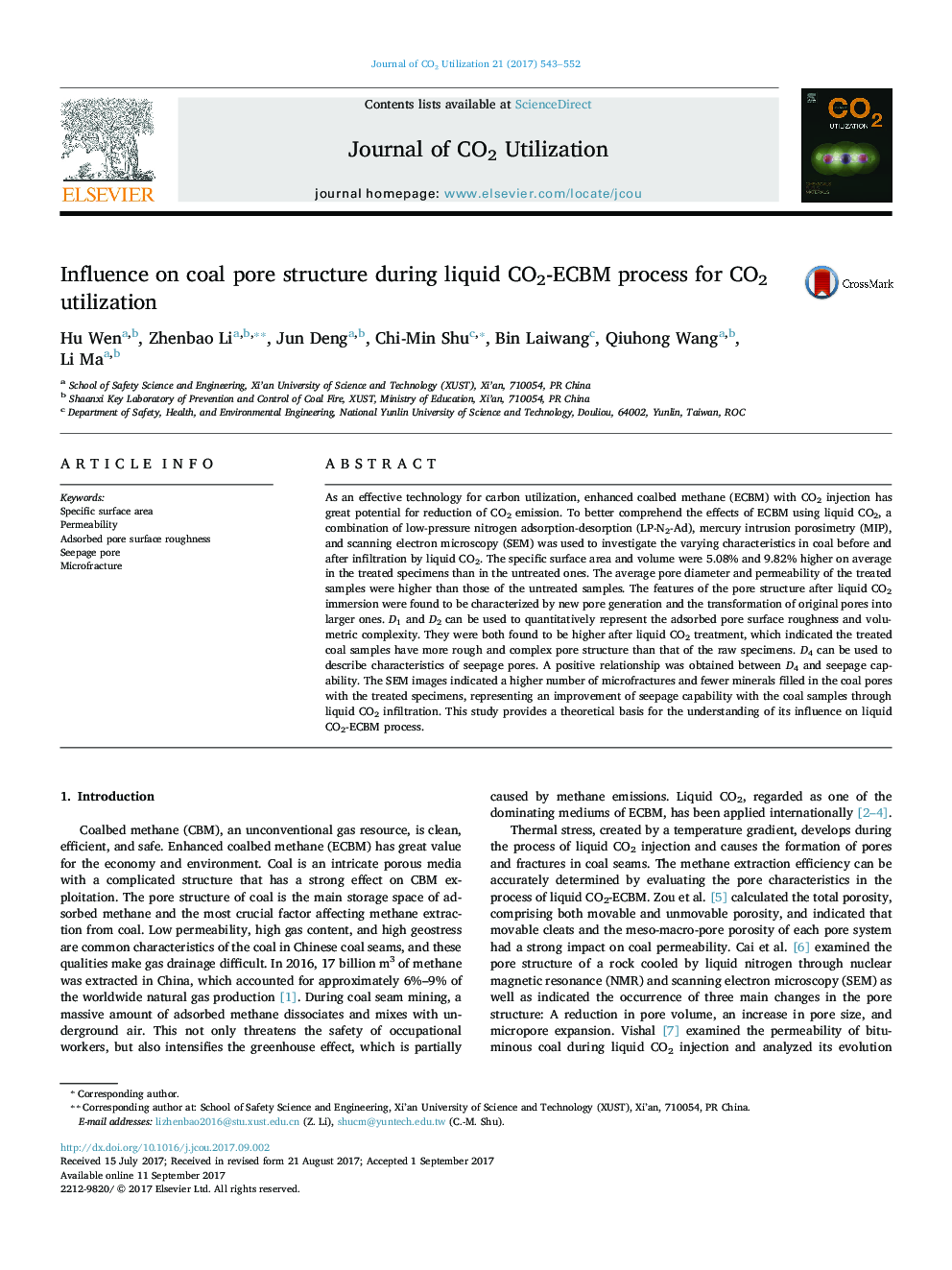| کد مقاله | کد نشریه | سال انتشار | مقاله انگلیسی | نسخه تمام متن |
|---|---|---|---|---|
| 6456156 | 1419841 | 2017 | 10 صفحه PDF | دانلود رایگان |
- Pore structure of raw and liquid CO2-treated coal specimens was determined.
- Fractal dimensions of pores with different sizes were calculated.
- Relationship between fractal dimensions and permeability was investigated and identified.
- Influence on coal during liquid CO2 infiltration was meticulously analyzed and elucidated.
As an effective technology for carbon utilization, enhanced coalbed methane (ECBM) with CO2 injection has great potential for reduction of CO2 emission. To better comprehend the effects of ECBM using liquid CO2, a combination of low-pressure nitrogen adsorption-desorption (LP-N2-Ad), mercury intrusion porosimetry (MIP), and scanning electron microscopy (SEM) was used to investigate the varying characteristics in coal before and after infiltration by liquid CO2. The specific surface area and volume were 5.08% and 9.82% higher on average in the treated specimens than in the untreated ones. The average pore diameter and permeability of the treated samples were higher than those of the untreated samples. The features of the pore structure after liquid CO2 immersion were found to be characterized by new pore generation and the transformation of original pores into larger ones. D1 and D2 can be used to quantitatively represent the adsorbed pore surface roughness and volumetric complexity. They were both found to be higher after liquid CO2 treatment, which indicated the treated coal samples have more rough and complex pore structure than that of the raw specimens. D4 can be used to describe characteristics of seepage pores. A positive relationship was obtained between D4 and seepage capability. The SEM images indicated a higher number of microfractures and fewer minerals filled in the coal pores with the treated specimens, representing an improvement of seepage capability with the coal samples through liquid CO2 infiltration. This study provides a theoretical basis for the understanding of its influence on liquid CO2-ECBM process.
Journal: Journal of CO2 Utilization - Volume 21, October 2017, Pages 543-552
